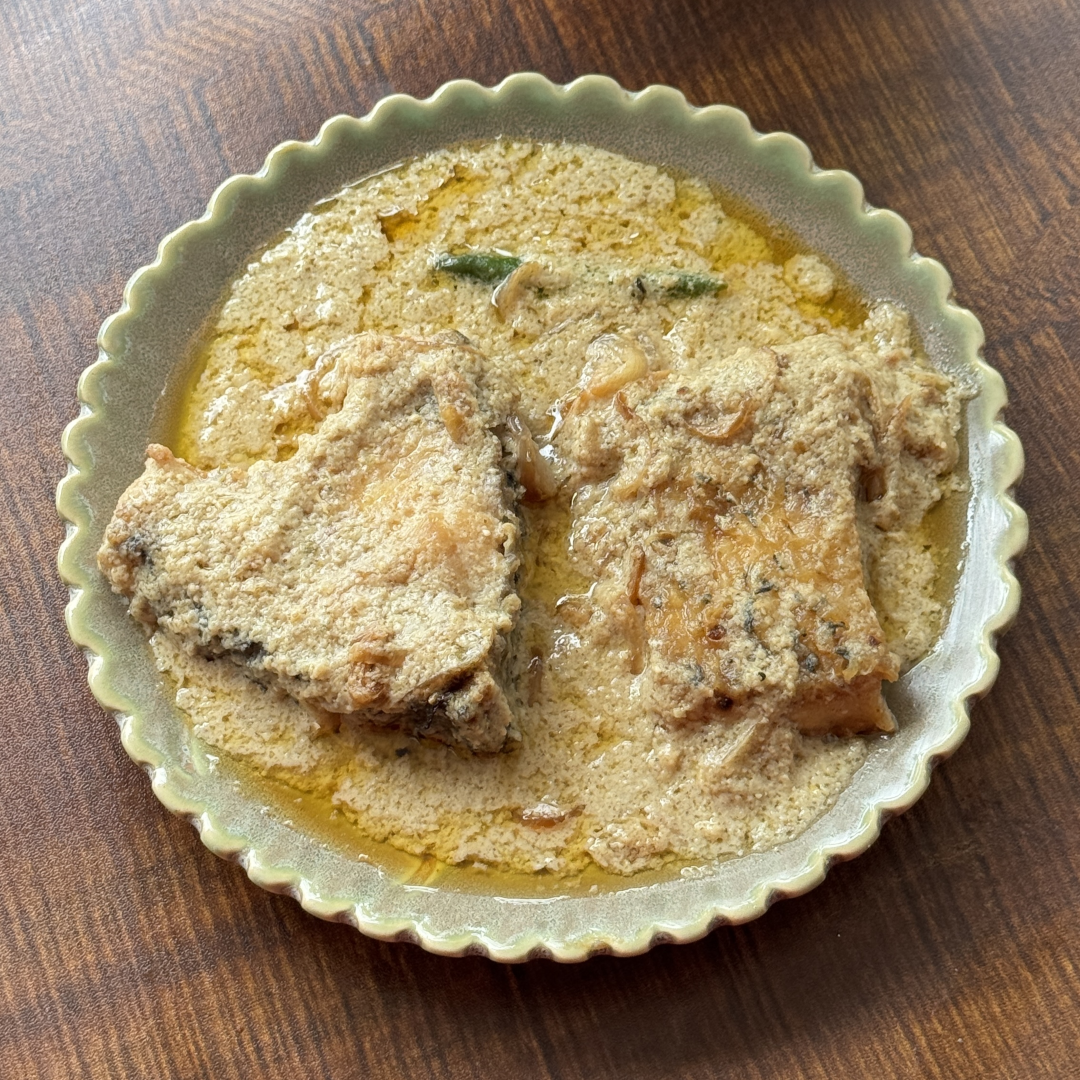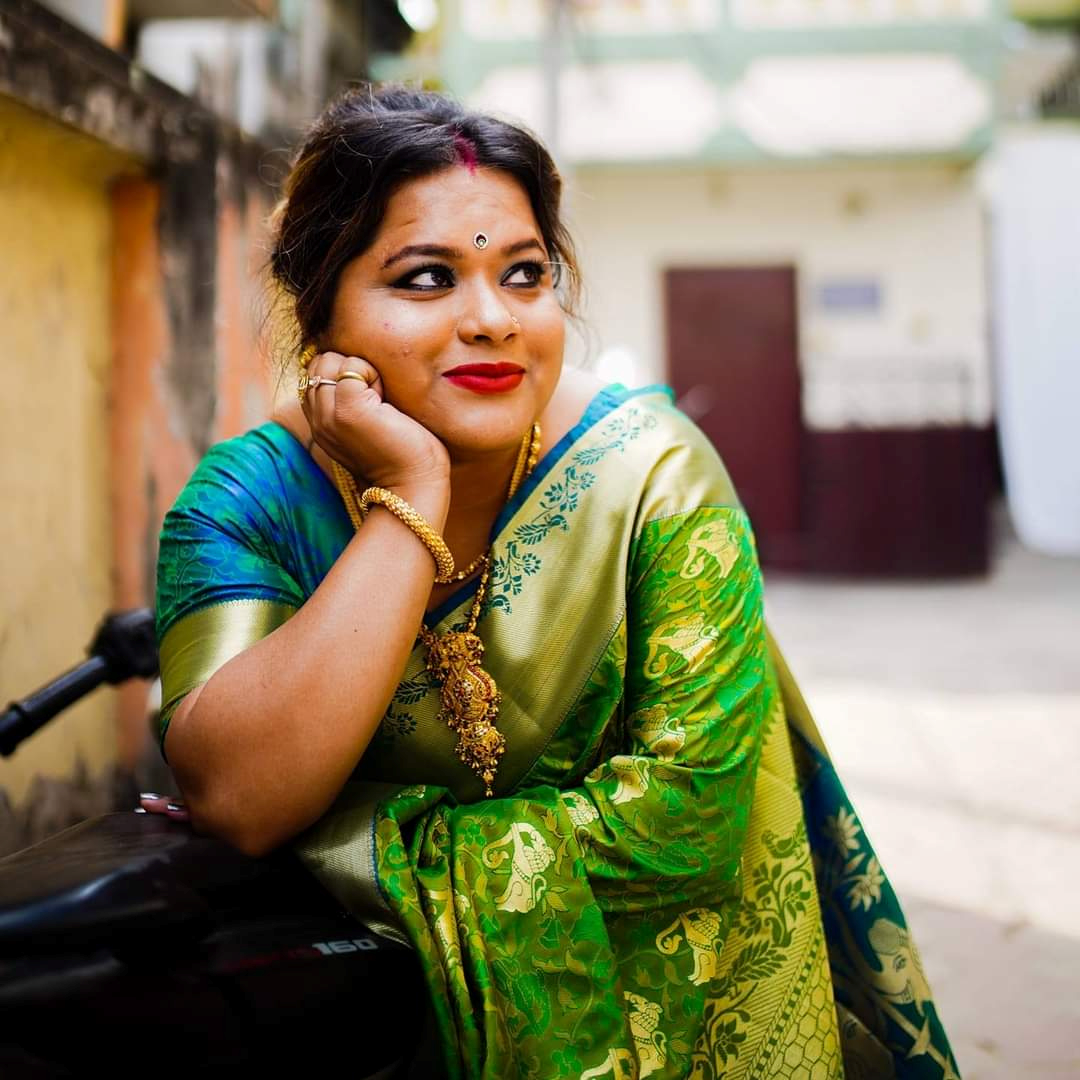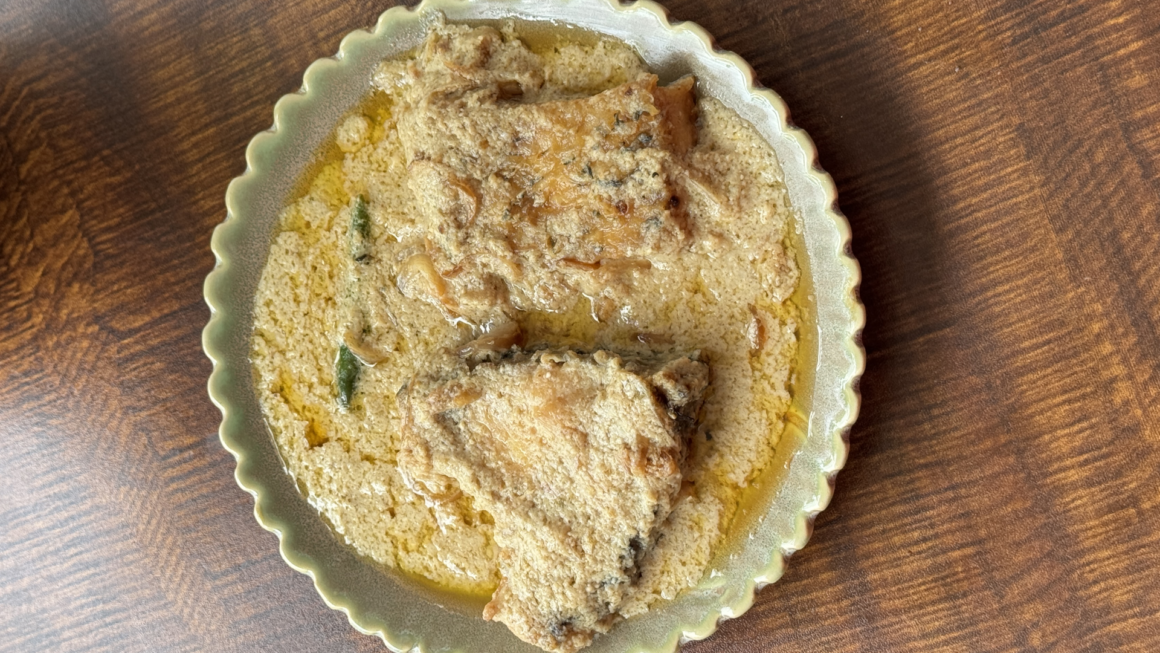Fish holds a special place in Bengali culture, considered auspicious and a staple for any celebratory occasion. Among the many cherished dishes, Katla Korma stands out for its rich history and unique blend of Mughal influences with Bengali flavours.
Ever since I began cooking, I have been captivated by the stories behind various cuisines. Take this korma, for instance-a dish with origins dating back to the 16th century, during the expansion of the Mughal Empire into South Asia. Legend has it that a special white version of this dish was served to Emperor Shah Jahan and his esteemed guests during the unveiling of the Taj Mahal. It exemplifies the grandeur of Mughal culinary expertise, characterised by luxurious and refined cooking methods.

The term korma comes from the Urdu word meaning “to braise.” Traditionally, kormas are rich, aromatic dishes prepared by braising meat or vegetables in yoghurt or stock, seasoned with a medley of spices. Depending on the spices used, the dish can range from mildly spiced to intensely flavourful. Kormas can be made with various meats such as lamb, goat, chicken, or beef and sometimes include vegetables like spinach or turnip.
Korma made its way into Bengali cuisine through Mughal influence, particularly after the conquest of Bengal in the mid-thirteenth century. The Mughals, renowned for their culinary sophistication, introduced their recipes to the region, leaving a lasting impact on the local food culture. Dhaka, the Mughal capital of Bengal, became a significant trading and culinary hub in South Asia.
Isn’t it fascinating how history intertwines with our food?
Katla Korma
Ingredients
- Katla fish: 4 pieces
- Onion: 1 (thinly sliced for baresta)
- Onion paste: 4 tbsp
- Ginger paste: 1 tsp
- Garlic paste: ½ tsp
- Curd: 4 tbsp
- Whole red chilli: 2-4 (as per preference)
- Cinnamon stick: 1-inch
- Cloves: 3-4
- Green cardamom: 3-4
- Shahi garam masala powder: ½ tsp
- Cashew paste: 3 tsp
- Green chillies: 3-4 (slit)
- Refined oil: ½ cup
- Ghee: 1 tsp
- Sugar: ½ tsp
- Salt: 1 tsp
- Kewra water: a few drops
Method:
- Prepare the fish: Smear salt over the fish pieces. If you prefer a yellow tint to your curry, add turmeric powder and let the fish rest for 15 minutes.
- Make the baresta: Heat oil in a kadai (wok) and fry the sliced onions until golden brown and crisp. Remove and set aside.
- Fry the fish: Add more oil to the kadai and lightly fry the fish pieces. Remove and set aside.
- Start the curry: In the same kadai, add ghee and whole spices. Sauté until aromatic.
- Add the pastes: Stir in the onion, ginger, and garlic pastes, followed by ¼ tsp of sugar. Cook until the mixture turns golden.
- Incorporate the curd: Lower the heat and add curd and cashew paste, stirring continuously to prevent curdling.
- Add fried onions: Add a portion of the fried onions and simmer gently. Add water to achieve your desired gravy consistency.
- Cook the fish: Gently add the fried fish pieces to the gravy. Cover and cook on medium-low heat for 5-6 minutes.
- Final touch: Sprinkle shahi garam masala powder, a few drops of kewra water, and the remaining fried onions. Mix well and serve hot with steamed rice.
Watch this recipe here – Katla Korma

Born in a remote town in West Bengal, Poulamee Ghosh Barman grew up in a world where restaurants and gourmet food were a rarity. Instead, she watched her mother and aunties craft exquisite dishes at home for special occasions—delicacies like ilish bhapa, chingri malaikari, kosha mangsho, pulao, dal, and fritters. The home-cooked meals were nothing short of gourmet.
Thirteen years ago, Poulamee moved to Bengaluru to pursue a career in IT with a multinational corporation. Adapting to the southern Indian food culture proved challenging, and the high cost of living in a metro city compelled her to cook for herself. With limited access to online resources at the time, she relied on phone calls to her mother and aunties for recipes and guidance. Over time, cooking became more than a necessity—it turned into a passion and a way to express her love through food, a tradition deeply rooted in her family.
Poulamee’s fascination with the history and evolution of cuisine grew stronger, inspiring her to experiment with traditional and lesser-known recipes. Today, she frequently recreates these time-honoured dishes in her kitchen, blending her heritage with her culinary creativity.
Translations and detailed descriptions are provided to give a better understanding of the story to people from different cultural backgrounds across the globe.

